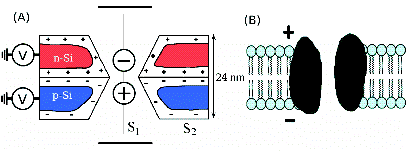A One-Two Punch Against Multidrug Resistant Cancer
13 Jul, 2007 03:10 pm
The development of multidrug resistance represents the single most important reason for therapeutic failure in the clinical management of cancer, since it renders tumors poorly responsive to a large variety of chemotherapeutic drugs.
As it turns out, cancer cells become multidrug resistant when changes occur in their cellular machinery. While one mechanism of change causes chemotherapeutic drugs to immediately get “pumped” out of the cancer cells before they can exert their cell-kill effect, another mechanism of change prevents the cancer cells from dying even in the presence of chemotherapy. The latter case occurs through obstructive defects in the intracellular signaling pathways that determine cell death through programmed mechanisms, the main method for tumor cell-kill in response to chemotherapy. Given the importance of programmed cell death in the chemotherapeutic response, it seemed evident that reversing the blockade in this pathway could reverse multidrug resistance.
In the published work entitled “Modulation of Intracellular Ceramide using Polymeric Nanoparticles to Overcome Multidrug Resistance in Cancer” (Cancer Research, May 2007), we introduced a novel strategy for the treatment of multidrug resistance in cancer by reversing blockade in the programmed cell death pathway. To obtain this effect, we utilized a combination therapy of the drug ceramide together with the chemotherapeutic drug paclitaxel, with the intention that ceramide would reverse the blockade, thereby re-instating the programmed cell death pathway for the chemotherapeutic drug paclitaxel to have an effect. As reported in this article, we developed nanoparticles made from biocompatible polymers to deliver this combination therapy of ceramide and paclitaxel to the tumor, and tested the efficacy of this therapy in a model of multidrug resistant human ovarian cancer cells. Interestingly, our nanoparticle therapy aimed to overcome multidrug resistance via a multi-pronged strategy; while ceramide administration aimed to restore the defects in programmed cell death signaling for cell kill from paclitaxel chemotherapy, nanoparticle delivery of this combination therapy also enhanced delivery of the drugs intracellularly, thereby additionally preventing the drugs from getting pumped out of the cell through the residual mechanism of multidrug resistance, which is still in place. This concept is illustrated in the figure below. We hypothesized that a multifunctional therapeutic strategy that could simultaneously overcome multiple mechanisms that give rise to multidrug resistance would be more beneficial then therapeutic strategies that only target a single mechanism.
The results of this study indicate that while the drug combination therapy causes a significant increase in cell kill of the multidrug resistant ovarian cancer cells, nanoparticle packaging of the combination therapy significantly improved this effect even further. And unlike prior therapeutic strategies that aimed to reverse multidrug resistance, this novel therapeutic was shown to enhance chemo-sensitization of drug sensitive (wild-type) cancer cells as well, thereby allowing for the future possibility for this treatment strategy to allow lower doses of chemotherapeutic drugs to be administered in cancer patients and thus, decreasing the potential for side effects. Molecular and cellular analysis verified that while the paclitaxel/ceramide combination therapy restored programmed cell death signaling in the multidrug resistant cells, nanoparticle delivery of the combination therapy prevented the drugs from being pumped out of the cells. Together, this nanoparticle therapy has been shown to utilize a novel one-two punch to effectively treat even those cancers that have become multidrug resistant.
Figure 1. Schematic illustration for the mechanism whereby nanoparticle therapy functions in multidrug resistant (MDR) tumors. a) In the MDR cancer cell, chemotherapeutic drugs (e.g., paclitaxel, PTX) that diffuse into the cells are readily effluxed out by the drug efflux transporters (e.g., P-glycoprotein), resulting in a lower intracellular concentrations of the drugs. The fraction of drug dose that remains in the cell initiates cell death by activating the apoptotic cascade. However, the absence of ceramide (CER) causes the apoptotic cascade reaction to never reach completion and the tumor cells continue to remain alive. b) Nanoparticle carrying PTX and CER are internalized by endocytosis into the cells, thus bypassing the membrane-bound efflux transporters, and release the content inside the cells. Once released, PTX again initiates cell death by activating apoptotic cascade reaction and, in the presence of CER, this process does go to completion resulting in cell death.

Reference:
L.E. van Vlerken, Z. Duan, M.V. Seiden, and M.M. Amiji (2007). Modulation of Intracellular Ceramide using Polymeric Nanoparticles to Overcome Multi-Drug Resistance in Cancer. Cancer Res. 67(10):4843-4850







 Read more
Read more